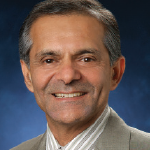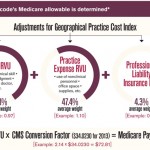
With approximately 250,000 members, the American Medical Association (AMA) is the largest association of physicians in the United States. Among medical societies, its voice is the loudest, its visibility the greatest, and its influence over medical issues with federal regulatory agencies like the Centers for Medicare and Medicaid Services (CMS), legislative policy actions, and media coverage is the strongest. The ACR maintains a voting seat in the AMA’s House of Delegates so it can participate in AMA actions across a wide spectrum of clinical, administrative, and policy-making areas. In addition, holding a seat in the House of Delegates is the prerequisite for the ACR to participate in many of the highly influential reimbursement committees of the AMA, such as the Current Procedural Terminology (CPT) Editorial Panel and the Relative Value Update Committee (RUC).
Unfortunately, the ACR is in jeopardy of losing its seat at the table.
The ACR Needs Your Support
Every five years, the ACR must verify that 1,000 of its members also belong to the AMA in order to maintain its seat in the House of Delegates. The ACR is up for review this year and we are short by 300 members.
Although a single House of Delegates’ seat in an organization the size of the AMA might seem inconsequential, AMA membership allows active participation at all levels in the many debates which determine the direction of the AMA. I have been a member of the AMA since I first entered practice in 1977, and, like many of you I suspect, there are times when I have agreed with the AMA’s actions and initiatives and times I have not. Regardless of what we might think of AMA’s stand on specific issues, the fact remains that only by being at the table, both as individual members and by retaining ACR’s seat in the House of Delegates, can we influence its direction.
ACR members Mel Britton, MD, and Gary Bryant, MD, currently serve as the ACR’s representatives to the AMA House of Delegates. ACR member Roy Altman, MD, served as the ACR’s delegate for 16 years and helped rheumatology have a voice. Drs. Britton and Bryant are instrumental in not only reporting back to the ACR about the issues being addressed by the AMA, but also in monitoring reports and resolutions that could affect rheumatologists and being the voice for rheumatology.
The AMA does many important things, such as managing CPT/RUC coding, advocating for a favorable Medicare fee schedule, engaging in medical liability reform, and working on insurance issues. These things affect all physicians regardless of specialty or state. The United States needs to have a national group that will represent all physicians. Physicians need to stand up, stand together, and speak with one voice. There are a lot of groups that are trying to separate physicians. As physicians we need a group that speaks for all of us. The AMA fulfills this role and has fulfilled this role for more than 160 years.
The ACR: Working within the System
The CPT Editorial Panel and the RUC are responsible for defining all CPT codes and providing annual Medicare reimbursement recommendations to CMS. CMS accepts more than 95% of the RUC recommendations each year, proving the importance of continuing participation by the ACR. Working with the AMA during the past five years, the ACR has been instrumental in creating new CPT codes and establishing new valuations.
- Last month, the ACR submitted information to the Practice Expense Resource Committee regarding dual energy X-ray absorptiometry studies. The ACR is hoping to increase reimbursement for technician time when performing dual X-ray absorptiometry studies and for the cost of the equipment.
- E&M codes were brought before the RUC during the CMS five-year review. The ACR, along with other specialties, requested that the relative value units of E&M codes be increased to appropriately reflect the amount of work required in diagnosing patients. Because of the work done by ACR and other specialties, E&M codes received a substantial increase January 1.
- Appropriate infusion codes were developed and valued through the AMA coding process. The ACR is part of the Drug Infusion Workgroup that discusses potential changes to infusion codes.
- The ACR monitored changes to trigger-point injection codes to ensure that rheumatologists’ interests were reported to the CPT panel.
These are just a few examples of the necessary work that is accomplished through the AMA CPT and RUC process. The ACR is able to work on CPT and RUC issues thanks in large part to ACR members Robert Lloyd, MD, Ron Kaufman, MD, and Eileen Moynihan, MD. These physicians are the ACR’s CPT and RUC advisors and attend three meetings a year to work on behalf of rheumatologists throughout the nation.
The ACR would like to have the opportunity to bring more codes through the process in the future. These AMA committees are part of the structures that work for physician reimbursement. In order to improve reimbursement, the ACR must have a seat at the table. The only way to have a seat is the AMA House of Delegates.
Tackling the fee schedule: Physician reimbursement through Medicare depends on the Medicare physician fee schedule. Every year, CMS releases the proposed physician fee schedule and allows physician groups from across the United States to comment on the proposed rule before the final rule is announced in November. The AMA gives specialties an opportunity to present information to the AMA to be included in the AMA comment letter. Additionally, the AMA worked tirelessly for several years to prevent drastic cuts in the conversion factor to the physician fee schedule. This year alone the AMA, along with the help of specialties like the ACR, was able to stop a projected 5% reduction to physicians in Medicare payments.
Protecting physicians from medical liability: Several states are in a medical liability crisis and have been in crisis for several years. Rheumatologists have seen drastic increases in medical liability premiums. The ACR, along with the AMA and other specialties, has been working with states and encouraging federal tort reform legislation. At the federal level, the AMA is working to obtain a $250,000 cap on non-economic damages in medical liability cases. At the state level, the AMA is providing resources to assist states in tort reform. Medical liability is a problem that affects all physicians regardless of specialty. The ACR needs the strength of the AMA to fight medical liability.
Every five years, the ACR must verify that 1,000 of its members also belong to the AMA…this year we are short by 300 members.
Battling insurance companies: The AMA’s Private Sector Advocacy division (PSA) works on issues that affect clinicians. In the past the PSA has worked on issues such as prompt-pay laws, Medicare Advantage, claims processing, and antitrust reform. The PSA also monitors the multi-district litigation settlement information. Essentially, the AMA reviews all of the litigation with major insurance companies and assists state societies and specialties in interpreting the settlements. The settlements include Aetna, Cigna, Health Net, Humana, and Wellpoint/Anthem. Additionally, the PSA provides resources to help resolve the issues affecting physicians.
Quality and the physician consortium: The AMA Physician Consortium for Performance Improvement develops quality metrics based on evidence-based clinical performance measures for patient safety. Membership in the Consortium is open to members of the AMA House of Delegates. Measures of interest to rheumatologists include osteoporosis and osteoarthritis. The ACR is currently discussing working with the AMA Consortium on rheumatoid arthritis measures.
Establishing policy: The AMA House of Delegates is the principal policy group of the AMA. The ACR currently has one delegate that votes on policy before the House of Delegates. The House of Delegates, composed of elected representatives from state and specialty societies across the United States, reviews hundreds of resolutions twice a year to determine which resolutions will become policies of the AMA. Policies that have been discussed recently include the flawed Sustainable Growth Rate formula, pay for performance, electronic medical records, obesity, and a universal health plan.
Allow the voice of rheumatologists to be heard at CPT, at RUC, on federal issues, on national issues, and with insurance issues that affect all physicians. It is easy to join the AMA. You can visit the AMA Web site at https://membership.ama-assn.org/JoinRenew, or call (800) 262-3211. If we do not increase the number of rheumatologists that belong to the AMA, the ACR will lose its voice in the AMA.
Join with me in having rheumatologists’ voices heard. Join the AMA.
Dr. Birnbaum is president of ACR. Contact him via e-mail at [email protected].


